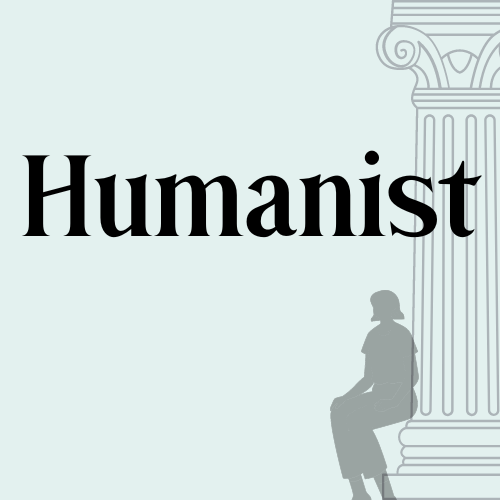Gimme a break: active learning breaks in lecture courses
Embrace taking breaks during your lectures, even just for a minute or two, and even at the end of the semester when you're exhausted. It's not laziness, it's cognitive science!

My nightmare came true: my department chair had to come observe me teaching. At least he was coming to my Roman Civ lecture, where I was pretty comfortable holding forth, instead of, say, my intermediate ancient Greek course, where I lived in fear of writing the wrong accent on the board. I was surprised afterwards by his feedback: it was a great lecture, he said but I could have included more student interaction and active learning. It was a lecture on Constantine near the end of the course, so maybe my creativity was a little tapped out. But I hadn't even realized that this was a standard by which I might be measured.
Earlier in the semester, I'd had successful interactive moments in lecture. Early on, I'd put up images of two Etruscan sarcophagi from the Museum of Fine Arts in Boston, and asked students to call out the differences between them:

My students observed that the type of stone is different, the men's facial hair is different, the style of the fabric is different, and so on, even some differences that I hadn't thought of myself. Many of these differences, I then explained to them, showed how artistic fashion in Italy was changing under the influence of Greek culture within a generation: the man on the right is the son of the couple on the left, as the inscriptions show. But Greek tomb sculptures don't have married couples together like this – that's an Etruscan thing – so it's not straightforward imitation.
I was vaguely aware, both from my professional training and from my experience as a student, that passively listening to a lecture isn't always the best way to learn. It's harder to stay awake in a lecture than in a discussion-based class, for one thing, which is a very concrete demonstration of the level of attention each demands. There's a reason that colleges advertise "small class size" to prospective students. But in a big room, lecturing – doing all the talking myself – seemed generally like the thing to do. Even in small classes, lecturing is indispensable sometimes. Sometimes, students need a primer on a subject that's unfamiliar, like Athenian democracy, before they can apply that knowledge in an activity that requires more thought. (Baeten et al. called this the "gradual approach" and showed its effectiveness.) In fact, many students expect and even prefer lectures to active learning or discussion.
Actually, I go to lectures for fun on a pretty regular basis, online and in person. I may not be representative of the general population in this respect, I know. But I like hearing authors talk about their personal experience of writing their books, hearing activists tell stories about their successes and what they've learned, and hearing researchers explain their findings. It's more engaging than reading a text by myself and I like learning new things, so even though I'm not going to be tested on the lecture, I often pay attention pretty well. (The next time you go to a lecture or webinar, take notes on what holds your attention and what doesn't!)
Since that lecture on Constantine, I've gotten much more conscientious about breaking up lectures with active learning, just for a few minutes at a time. And it turns out that those few minutes can make a big difference.
Lecturing: Not All Bad
In her 2023 book on Great College Teaching: Where It Happens and How to Foster It Everywhere, Corbin Campbell at American University reports observing many excellent teachers who lecture regularly, in classes large and small. Many of them delivered what she calls "active lectures," with activities and student questions built into the format. Both traditional and active lectures helped students to master a lot of new information – in other words, taking time out for activities didn't detract from learning the content. Incidentally, many of the most successful teachers, she found, are working not at the most prestigious liberal arts colleges but at regional public universities, where there is often a vibrant culture of innovative, student-centered teaching.
Christine Harrington and Todd Zakrajsek, of Morgan State U. and UNC Chapel Hill respectively, co-authored a book on Dynamic Lecturing in 2017 (you can check out an episode of the podcast Teaching in Higher Ed about it). In the introduction, they explain that Alison King's 1993 article in College Teaching, "From Sage on the Stage to Guide on the Side," marked a shift away from lecture to active learning, which produces more lasting knowledge and better student performance. But the shift went too far, and almost demonized lecturing. King's article isn't about turning every class into a discussion format: it's about breaking up lectures with interactive breaks to facilitate better learning. Zakrajsek points out that there's only so many facts the human brain can process at once, and once your "cognitive load" has been exceeded, you're not going to remember any more. King encourages lecturers to take a minute or two to ask students a question and have them reflect on their own or talk to each other about their answers (check out Jim Lang's video on this).
Cognitive science has everything to do with this technique. A few weeks ago, I came across a video of Pooja Agarwal at SXSW, talking about "Powerful Teaching" and the importance of "retrieval practice," or recalling things you learned recently. We've all had the experience of cramming for a test only to forget everything a week later, or realizing our mind has wandered during a lecture and we've missed something. Just because you're presented with information doesn't mean you'll be able to retrieve it later. The act of retrieving that information is crucial to memory, as Agarwal shows. Taking a minute or two out of your lecture to ask students to retrieve information can help them retain it longer. The more time passes, the harder it is to retrieve information, but it's kind of a fun challenge: "what did you learn two days ago?" is a more interesting question than "what did you learn today?" This is a very basic example of "interleaving," interspersing learning new topics with recalling or revisiting earlier topics, which also improves recall.
Agarwal, who has a whole website devoted to retrieval practice, also shows that designing your questions so that students have to apply what they just learned to a real scenario, or categorize things or analyze them in some way, produces even greater understanding, compared with merely recalling isolated facts. The higher up in Bloom's Taxonomy you can get, the better.
Practice quizzes also help students retain information and perform better on later exams, compared to just re-reading or reviewing notes (this is known as the "testing effect"). This is pretty simple to do with the polling tool on Zoom or with something like Poll Everywhere in person. The authors of Make it Stick write:
A child stringing cranberries on a thread goes to hang them on the tree, only to find they’ve slipped off the other end. Without the knot, there’s no making a string. Without the knot there’s no necklace, there’s no beaded purse, no magnificent tapestry. Retrieval ties the knot for memory. Repeated retrieval snugs it up and adds a loop to make it fast.
In 1976, Mary Budd Rowe at the National Science Foundation published research proving the efficacy of the "pause procedure," where she would pause for 2 minutes, 3 times during a 45-minute lecture and ask the students simply to compare notes. It was a moment for them to practice retrieval, but it also just mixed things up with a new dynamic, which allowed them to "reset" their wandering focus.
This all reminds me of Cicero, the author I know best, who is a master of mixing things up as a speaker: he'll transition from outrage to soaring sermons, put on a little pageant by playing other characters, quote from plays, tell myths and stories, address individuals in the audience, tell jokes, or whatever else will keep his audience's focus. Often what other scholars call "digressions" are really just tricks to refresh people's attention, I think. However, he doesn't actually need or want people to remember and analyze everything he says: he's trying to leave them with an overall impression and strong feelings that will lead them to vote his way. But for him, the entertainment value of an oration is what enables him to hold people's attention, so that they'll actually listen to his arguments. By the same token, the more engaging our lectures are, the more students will take in from what we're trying to tell them. The "pause procedure" and retrieval practice offer tools for greater engagement.
You can tell that this scholarship from the world of cognitive science has made it into the world of online learning and corporate instructional design, because you've no doubt participated in mandatory online sexual harassment trainings through your institution. Remember how they're broken up with quiz questions and scenarios that ask you to apply the policy to a simulation? That's active lecturing. In an online setting, especially if it's asynchronous or pre-recorded, our attention wanders even more quickly, so these interactive pauses are even more crucial and need to be even more frequent. But hopefully we can produce something better than those mandatory slogs (sorry, HR).
What could this look like?
Dynamic Lecturing has worksheets for developing and evaluating great lectures in Chapter 10, including a list of strategies, which is a great place to start if you're developing lectures from scratch.
If I've prepped a lecture before, I start by looking for slides where I've provided a list of examples, either words or images, like different depictions of Greek myths. Instead of coming up with those examples myself, I can ask my students to find them – I can make a virtue out of their ready access to laptops and smartphones, especially in an online class. I could also ask them to do some quick research: why is there a menorah on the Arch of Titus? What was going on in other places like Greece, China, or India at the time of Rome's founding? What do people say caused the fall of the Roman empire? To aggregate their answers, you can share access to a Google Slides presentation or Padlet, so that students can paste in the words or images they find, or have them paste answers in the chat if you're virtual. You can also use a tool like Slido, so that students' answers form a word cloud. The beauty of these tools is that students get to see each others' answers or all the examples together, so the class can quickly generate a substantial list instead of you preparing it yourself and reading it to them.
One popular tool in active lectures is to ask students to identify a couple of key takeaways, a couple of questions that need clarifying, or a few interesting or surprising things they learned that day. This opportunity for metacognition, or reflecting on what you've learned, helps students to process new knowledge and also helps them appreciate all the effort you've put into engaging them.
When you're asking retrieval questions, while you can ask a simple factual question with one right answer and wait for a quick, vocal student to call it out, that doesn't leave much thinking or retrieval for other students to do. Instead, you want questions that:
- require students to retrieve knowledge from past classes
- enable students to make a connection with their prior knowledge and lived experience outside the class; and/or
- require students to apply a general principle to a new example
So instead of just asking what year Cicero died, I might ask:
- What other political assassinations have we learned about in the late Roman Republic? How does the political impact of Cicero's death compare to the death of the Gracchi, for example? (retrieval practice and synthesis)
- What different reactions might Cicero's death and the display of his head in the forum have provoked? How do you think different groups of Romans reacted? (looking at historical events from different perspectives)
- Do you think Cicero still would have delivered his Philippics against Mark Antony if he'd known he would be assassinated as a result? (a very popular topic of discussion in ancient Roman rhetorical schools, in fact, and an interesting question of ethics)
- Note: you could format this as a poll, and have students pair up to discuss why they answered what they did, and then have them take the poll again after the discussion
- What modern examples of assassinations of political opposition leaders and dissidents (real or fictional) can you think of? How is your example similar to or dissimilar from Cicero's death? (evoking prior knowledge and lived experience)
- Do you think Cicero should have done something other than what he did, to oppose Antony and the second triumvirate more effectively? (also an ethical question, and there are always students who want to point out plot holes and impracticality as I invite them to do here)
I might also have asked students to guess what happened next – what do you think Antony's wife is said to have done to celebrate Cicero's death? (It's so much weirder than you think.) What do you think Cicero's son did? (Not weird, but sad.) This kind of challenge is definitely a fun way to reset students' attention spans – did you Google the answers yourself? See what I mean?
In these examples, when I'm going to ask a question that requires more than a few words to answer, I would want to give students a minute to think and write for themselves so that everyone has to do the retrieval practice and reflection, and then a minute to turn to the person next to them and discuss. I might use a Padlet to collect their answers, or ask a few people to report their discussion back to the whole class, but this isn't the sort of thing you have to grade. If I'm going to introduce some kind of problem or ambiguity, like whether Cicero's published speeches accurately represent what he said in public, I don't want to just throw out that problem and move on; I want students to have a chance to think about it a little and process what it means.
In some situations, you might want responses to be anonymous – questions about personal experiences, for example – and tools like Answer Garden, Tweedback, and Bagel Institute can help with that. Those tools can also be useful when you want to encourage students to ask clarifying questions or identify points that they didn't understand, so that they don't feel embarrassed.
So, to sum up: embrace taking breaks during your lectures, even just for a minute or two, and even at the end of the semester when you're exhausted. It's not laziness, it's cognitive science!
Further reading:
Harrington, Christine, José Antonio Bowen, and Todd D. Zakrajsek. 2017. Dynamic lecturing: Research-based strategies to enhance lecture effectiveness. Routledge.
King, Alice. 1993. "From Sage on the Stage to Guide on the Side," College Teaching, 41:1, 30-35.
Stachowiak, Bonni. 2019. "How to Engage Students and Support Learning in Large Classes." EdSurge.
"Lecture Breakers" podcast





